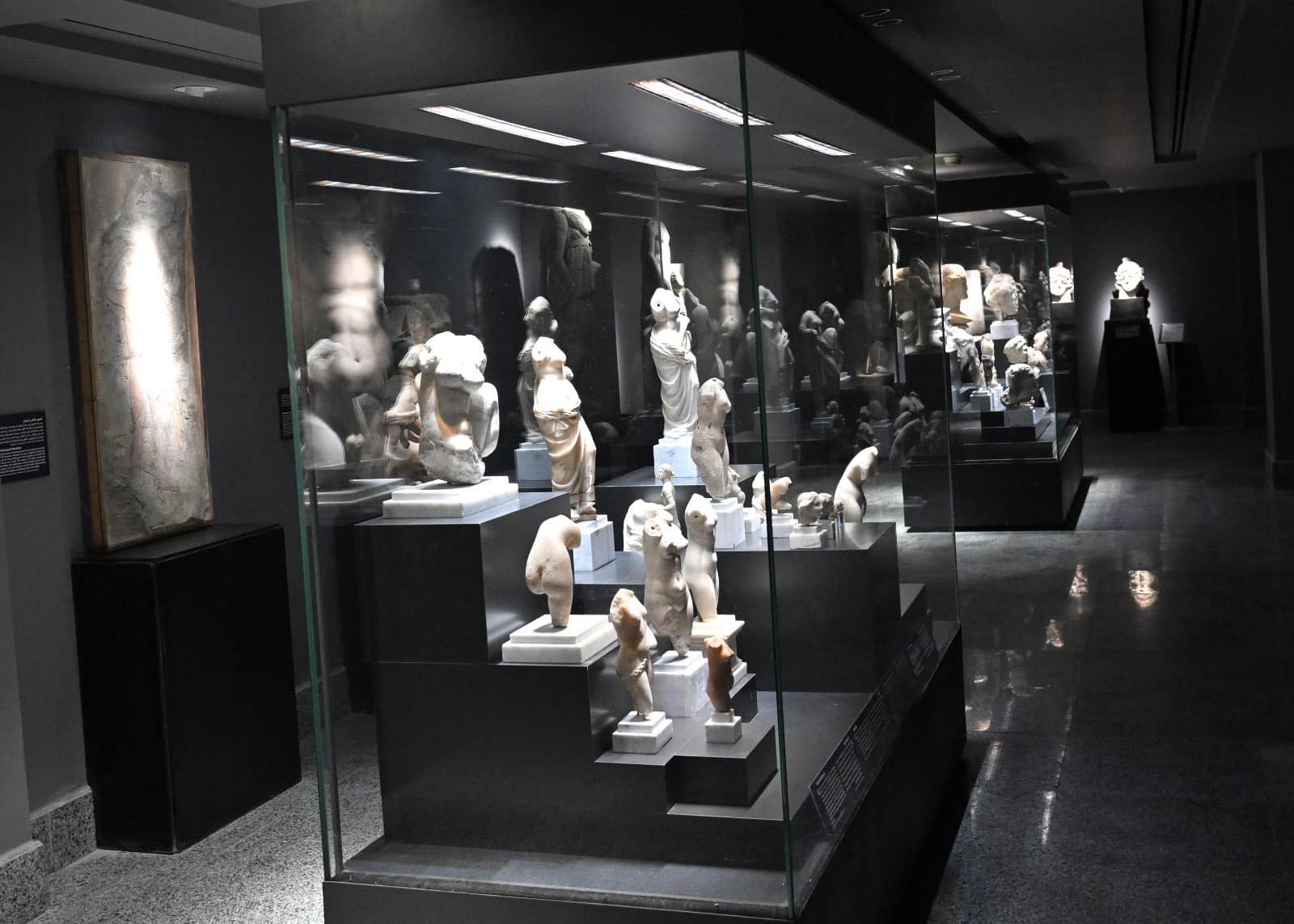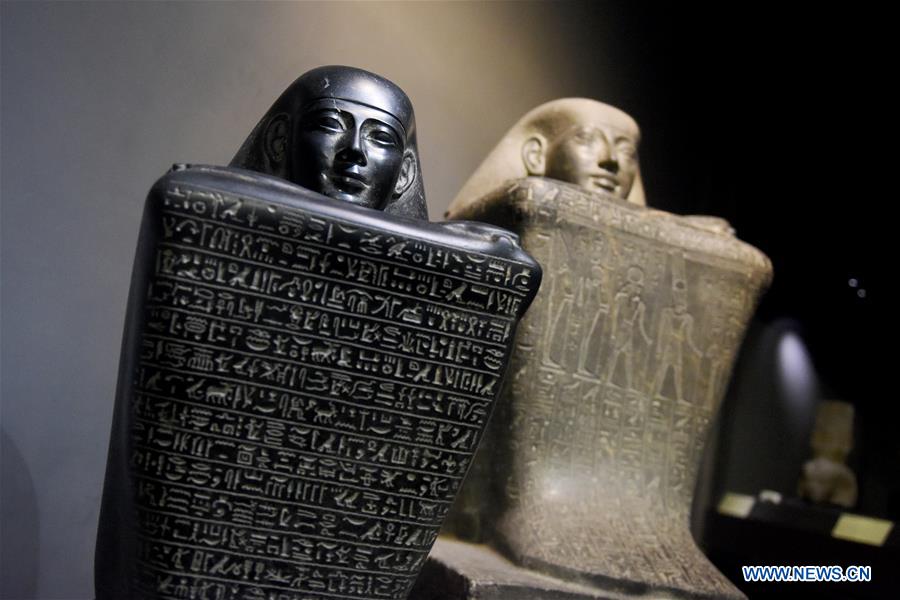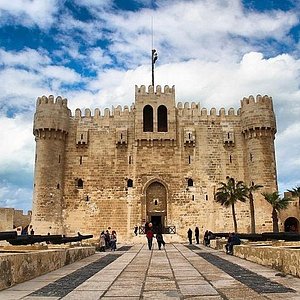Unravel History's Treasures: Alexandria National Museum

Welcome to this blog about the Alexandria National Museum! Here, you will discover a wealth of information about one of Egypt's most important cultural institutions. Whether you have visited the museum before or are interested in Egyptian history and culture, this blog will surely provide you with fascinating insights and knowledge.
Overview of Alexandria National Museum and its significance:
The Alexandria National Museum is a world-renowned institution that houses over 1800 artefacts representing the history of Egypt from the Pharaonic period until the modern era. It is a treasure trove of priceless objects that have played a significant role in shaping the culture and identity of Egypt.
The museum is located in a stunning neoclassical building that dates back to the early 20th century. The building is just as important as its artefacts, as it is a testament to Alexandria's rich architectural heritage.
Historical context of the museum:
The Alexandria National Museum was founded in 2003 to preserve and showcase Egypt's rich cultural heritage. The museum's location in Alexandria is significant because the city has played a crucial role in Egypt's history since its founding by Alexander the Great.
The museum's collection includes many artefacts, including mummies, jewellery, coins, sculptures, and paintings. Many of these artefacts have been excavated from Alexandria and other parts of Egypt archaeological sites.
The Alexandria National Museum is an essential destination for anyone seeking a deeper understanding of Egyptian history and culture. Its collection of artefacts is a testament to the richness and diversity of Egyptian heritage, and its location in the heart of Alexandria is a reminder of the city's deep historical significance.

The Building and Grounds
Architecture and design of the museum building
As you approach the Alexandria National Museum, you will be struck by the stunning neoclassical building that houses it. The building was originally constructed as a palace for a wealthy king but was later converted into a museum to showcase Egypt's rich cultural heritage. The architecture and design of the museum building are a testament to Alexandria's rich architectural heritage with impressive columns, arches, and intricate details.
Inside, the museum boasts a modern and sleek interior that provides a beautiful and serene backdrop for the artefacts. The museum's flooring, lighting, and wall colours all help create a calm and peaceful atmosphere, allowing visitors to immerse themselves in Egypt's history and culture fully.
The surrounding gardens and landmarks
The Alexandria National Museum is in the heart of Alexandria, surrounded by beautiful gardens and landmarks. The surrounding gardens are an oasis of calm amid the hustle and bustle of the city and provide visitors with a pleasant escape from the noise and chaos of the streets.
You can find some of Alexandria's most famous landmarks within walking distance of the museum, including the Alexandria Library, the Citadel of Qaitbay, and Pompey's Pillar. These landmarks have unique history and significance; exploring them is a great way to deepen your understanding of the city and its culture.
Overall, the Alexandria National Museum and its surrounding grounds are a must-see destination for anyone interested in history, culture, or architecture. The museum's impressive neoclassical building and stunning collection of artefacts will leave a lasting impression on visitors, while the surrounding gardens and landmarks provide a peaceful respite from the chaos of the city.

The Greco-Roman Period
Artefacts and exhibits related to the Greco-Roman era
As you explore the Alexandria National Museum, you will encounter various artefacts and exhibits related to the Greco-Roman period. The museum's impressive collection includes statues, coins, ceramics, and jewellery, all of which provide a fascinating glimpse into this era's art, culture, and daily life.
One of the most notable exhibits is the stunning mosaic floor depicting the sun god Helios, which dates back to the fourth century AD. The intricate details and vibrant colours make it a true masterpiece of ancient art. You can also see a range of statues depicting rulers and gods of the period, including a statue of Alexander the Great himself.
Historical significance of this period
The Greco-Roman period is known for its significant cultural and intellectual contributions to the world. Alexandria was a learning hub during this era, with scholars and philosophers from all over the ancient world coming to study and exchange ideas. This period also saw the rise of Christianity and the eventual spread of the religion through the Roman Empire.
The artefacts and exhibits in the Alexandria National Museum provide insight into these historical developments and help us understand the impact of this period on Egyptian and world history. This museum section is a must-visit for anyone interested in the art, culture, and history of this fascinating era.

The Pharaonic Period
Artefacts and exhibits related to the Pharaonic period
As you step into the Alexandria National Museum, get ready to be mesmerized by the remarkable display of artefacts and exhibits from the Pharaonic era. The museum has an impressive collection of over 1,800 artefacts, including statues, sphinxes, papyrus, and jewellery.
Check out the intricately designed mummies and coffins of pharaohs and other notable figures, which give you a glimpse into the elaborate burial rituals of ancient Egyptian society. Be awed by the colossal statue of Queen Hatshepsut, one of the most powerful queens of the New Kingdom.
Historical significance of this period
The Pharaonic period in ancient Egypt is considered one of the most significant periods in world history. The rise of the pharaohs marked the beginning of a civilization that would go on to have a profound impact on art, religion, and politics.
The artefacts and exhibits at the Alexandria National Museum testify to this civilisation's architectural and engineering feats. The construction of awe-inspiring monuments such as the Pyramids of Giza and the Great Sphinx are just a couple of examples of the achievements of this period.
Exploring this museum section will undoubtedly leave you in awe of these historical wonders and educate you about their exceptional contributions to the world. Visit the Pharaonic section to better understand the life and customs of the ancient Egyptians.

The Coptic Era
Artefacts and exhibits related to the Coptic era
As you journey through the Alexandria National Museum, you'll find a section dedicated to the Coptic era. This period of Egyptian history spans from the 3rd to the 12th century, during which Christianity became the dominant religion in Egypt. The museum's collection of artefacts and exhibits from this time offers a unique glimpse into this fascinating era.
The collection includes Coptic textiles, icons, and crosses, reflecting the religious influence on the art of this period. You'll be amazed at the intricate designs and bright colours used to create these beautiful works of art. Pay special attention to the Akhmim collection, one of the world's largest and finest collections of Coptic textiles.
Historical significance of this period
The Coptic era marked a major transition in Egyptian history, introducing and spreading Christianity throughout the country. During this time, the Coptic language and script were developed, which significantly preserved ancient Egyptian culture and language.
Additionally, the period saw the emergence of prominent Coptic figures such as Saint Athanasius, who played a vital role in defining the core beliefs of Christianity and shaping the theology of the church. The Alexandria National Museum provides an exceptional opportunity to learn about these influential figures and their contributions.
Exploring the Coptic section of the museum will give you a better understanding of the religious and cultural changes that occurred during this era and how it still influences modern-day Egyptian society. Don't forget to take in the stunning collection of artefacts and exhibits on display to appreciate the artistry and craftsmanship of the time.
Egypt's Islamic Heritage
Artefacts and exhibits related to Islamic heritage in Egypt
As you explore the Alexandria National Museum, you can discover the rich Islamic heritage of Egypt through its remarkable collection of artefacts. The Islamic section is dedicated to the history and art of Egypt, from the Arab Conquest in 641 AD to the Ottoman conquest in 1517 AD.
The museum showcases various objects from the Islamic era, including pottery, metalwork, and calligraphy. You'll be amazed by the beautiful Quranic manuscripts, which display exquisite calligraphy and tell a story of the spread of Islam in Egypt. The collection also displays traditional Islamic clothing, demonstrating the importance of fashion and textiles in Arab culture.
One of the highlights of the museum's Islamic collection is its rich collection of woodwork, including doors, window screens, and furniture, displaying the skilled craftsmanship of this era.
Historical significance of this period
The Islamic era in Egypt marks a critical period of its history and witnessed significant architectural and artistic achievements. During this era, Egypt became a centre for Islamic scholarship, learning, and culture. The city of Cairo emerged as a prominent centre of Islamic commerce when it became the capital of the Fatimid caliphate.
The Islamic Era significantly changed Egyptian art, architecture, and culture. The three-dimensional design and decorative arts flourished, contributing to the creation of Egypt's most beautiful Islamic architecture.
Exploring the Islamic section of the Alexandria National Museum provides an excellent opportunity to learn about the cultural and religious diversity that shaped Egypt. It's an excellent chance to appreciate this era's beauty and artistic achievements.
Alexandria's Modern History
Artifacts and exhibits related to Alexandria's modern history
Alexandria's rich modern history can be explored at the Alexandria National Museum through its remarkable collection of artefacts. The museum features a section dedicated to the city's recent past from the late 19th century to the present. Various objects, photographs, documents, and memorabilia display Alexandria's cultural, social, and political history.
You can discover the city's vibrant cosmopolitan history by displaying traditional and modern clothing, jewellery, and accessories. The museum also features a collection of cameras and photographic equipment, highlighting Alexandria's prominent role in the early days of photography.
The exhibits also include fascinating objects illustrating the city's rich literary history. There are manuscripts, books, and letters from prominent authors and scholars, including Taha Hussein, Naguib Mahfouz, and Lawrence Durrell, inspired by the city's unique ambience and contributed to its intellectual and artistic vibrancy.
Historical significance of this period
The late 19th century marked a critical period in Alexandria's history as it transformed from a sleepy provincial town to a bustling modern city. The city was the first in Egypt to introduce modern infrastructure, such as railways, telegraphs, and electricity.
The modern period in Alexandria also witnessed significant social and political changes, including the emergence of a vibrant nationalist movement and the rise of socialism. The development of the Egyptian feminist movement and the role of women in the city's intellectual and social life also became prominent during this era.
Exploring the modern section of the Alexandria National Museum provides an excellent opportunity to learn about the city's contributions to modern Egypt and the broader Mediterranean region. It's an excellent chance to appreciate Alexandria's cultural, social, and political heritage.

Explore Special Exhibitions at Alexandria National Museum
Temporary exhibits and events held at the museum
If you are interested in exploring the modern history of Alexandria, the Alexandria National Museum's temporary exhibits and events are a must-see. The museum frequently hosts special exhibitions that glimpse the city's cultural and social vibrancy. These events are an excellent opportunity to learn more about Alexandria's rich heritage, traditions, and contemporary artistic expressions.
You can check the museum's website or social media pages to keep up with the latest updates on upcoming events and temporary exhibits. Visitors can also join guided tours and interactive workshops that provide a deeper understanding of the exhibits and their historical context.
Upcoming and past exhibitions
Past exhibitions held at the museum have covered various topics, including Alexandria's literary legends, contemporary art scene, and Islamic and Coptic heritage. Some of the most popular exhibitions held in recent years include:
| Exhibition | Description |
|---|---|
| Alexandria: The Cosmopolitan City | An exhibition showcasing the diverse cultural, religious, and ethnic communities that shaped and continue to shape the city's identity. |
| A Tribute to Alexandria's Literary Giants | An exhibition celebrating the city's rich literary heritage and featuring personal items, manuscripts, and letters from prominent authors. |
| Contemporary Art from Alexandria | An exhibit featuring paintings, sculptures, and installations by contemporary artists living and working in Alexandria. |
Don't miss the chance to visit the museum's upcoming exhibitions and immerse yourself in Alexandria's dynamic and diverse cultural expressions.

Recommendations for a visit
When you visit the museum's upcoming exhibitions, be sure to join one of their guided tours or interactive workshops to better understand the exhibits and their historical context. Don't forget to wear comfortable shoes and bring a camera to capture all the beautiful and fascinating items you'll see. After your visit, grab a bite to eat at one of the nearby cafes or restaurants and stroll through the nearby parks.
The Alexandria National Museum is a fantastic opportunity to explore the cosmopolitan city's exciting history and contemporary artistic expressions. With its temporary exhibits and events, there's always something new to discover, so don't miss out on this fabulous cultural experience!
